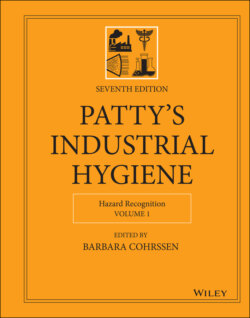Читать книгу Patty's Industrial Hygiene, Hazard Recognition - Группа авторов - Страница 92
9.1.2 Concern #2 – Dimethyl Dicarbonate
ОглавлениеDMDC is a microbial control agent used in place of filtering to prevent spoilage of wine. Trained operators and special equipment are used to dose the wine in a closed system. The location of the DMDC metering equipment (shown in Figure 10) in the bottling area presented a potential exposure to bottling employees in the event of a release. The bottling area had limited ventilation and limited means of escape.
FIGURE 9 Pure sulfur dioxide liquid filling and dispensing.
FIGURE 10 DMDC dosing machine in bottling area.
In the event of a release of DMDC, the bottling crew would be vulnerable. Human studies have shown that DMDC is a highly corrosive skin irritant and that dermal contact may result in irreversible skin damage, scale formation, and necrosis. DMDC is known to cause adverse effects on the respiratory system as well (15).
The SDS for DMDC indicates that its exposure ceiling limit is 0.04 ppm, a very small quantity, which means any release can lead to severe exposure. In the “Safety Precautions When Handling DMDC” from the manufacturer, it states that DMDC is toxic if inhaled and should only be used in well‐ventilated areas. In addition, the document warns that in the event of a spill or release, personnel must be evacuated immediately. According to the SDS, the odor of DMDC cannot be used as a warning against inhalation exposure, and that “a NIOSH approved air‐purifying organic vapor respirator must be used when concentrations are between 0.04 and 10 ppm”; and “positive pressure air‐supplied respirators if concentrations are unknown or exceed 10 ppm or if the workspace is confined and unventilated” (8).
